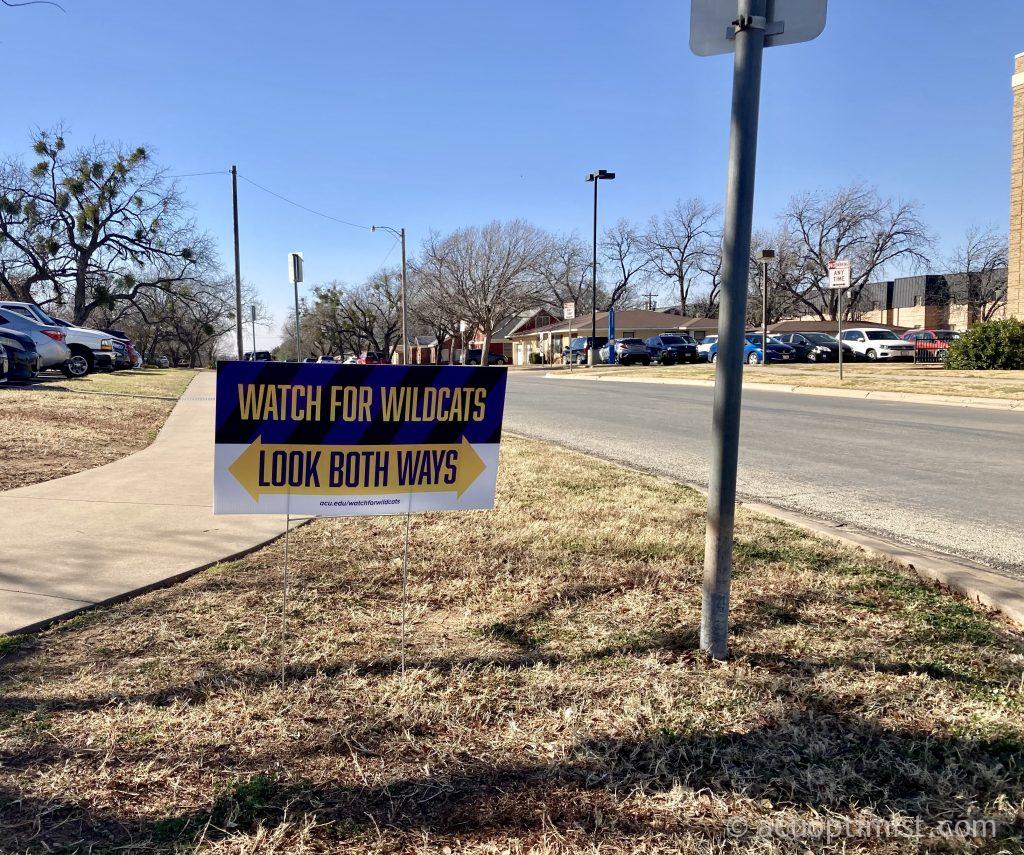In one semester on campus, at least four students were hit by cars, and two of those incidents resulted in hospitalization. After the multiple accidents and consistent, fearful caution coming from students crossing the busy streets each day, surely the university would be working to take drastic measures to prevent this from happening.
What did students return to this spring? One additional set of flashing lights at a crosswalk and lawn signs at each intersection.
The newly introduced ‘Watch Out for Wildcats’ campaign, though well-intended in its inception, feels more like fluff than a real solution.
On both E.N. 16th Street and Campus Court, there are a total of 14 painted crosswalks. Two of those crosswalks are outfitted with flashing lights, while four more are at intersections with stop signs. Five more are indicated only by a generic crosswalk sign.
With most of the dorms on campus being aligned with these streets, it makes sense that each crosswalk should be outfitted with flashing lights or stop signs where applicable.
However, neither EN 16th nor Campus Court are owned by the university. They are owned by the city of Abilene, making any updates difficult to obtain through the university level.
Though the Watch Out for Wildcats campaign was able to be implemented at the university level, it has to serve only as a starting point and not as a solution or even a middle ground.
As far as solutions go, we think the best solution and the goal the university should aim for is flashing crosswalk signs at each crosswalk not at an intersection with a stop sign, and more street lighting in high traffic areas. This would provide the safest environment possible for students crossing the streets at all hours of the day. Of the accidents that occurred last semester, more than one of them happened at night, showing that poor lighting is a major part of this issue, as well as indicating the crosswalks in the first place. More street lights and flashing signs may be difficult to obtain quickly due to the nature of the city’s ownership, however, there are other solutions that we believe would be beneficial while advocating for those additions.
First, reducing the speed limit on the streets would make it easier for drivers to be more observant. This would help reduce the time it takes for a driver to see someone crossing the street to stopping their vehicle for said person. If lowering the speed limit doesn’t fix the issue, adding speed bumps on the streets in high foot traffic areas would force drivers to slow down.
Second, repainting the crosswalks would be advantageous as it would make it easier for both students and drivers to see them. Many of the crosswalks are faded and hard to see for both drivers and students.
These are all physical solutions that require cooperation between the city and university, but students can also help keep themselves safe while advocating for these changes. When crossing streets between campus and residence halls, be sure to primarily use crosswalks that have stop signs or flashing lights. Avoid the faded crosswalks and be sure to look both ways before crossing the street. Pause the music or walk without headphones on to be more aware of your surroundings.
As for the university, students and organizations like SGA: Don’t stop advocating for safer conditions for students. Create petitions, send emails to administrators and the city and use your voices to make sure the streets become safer.

